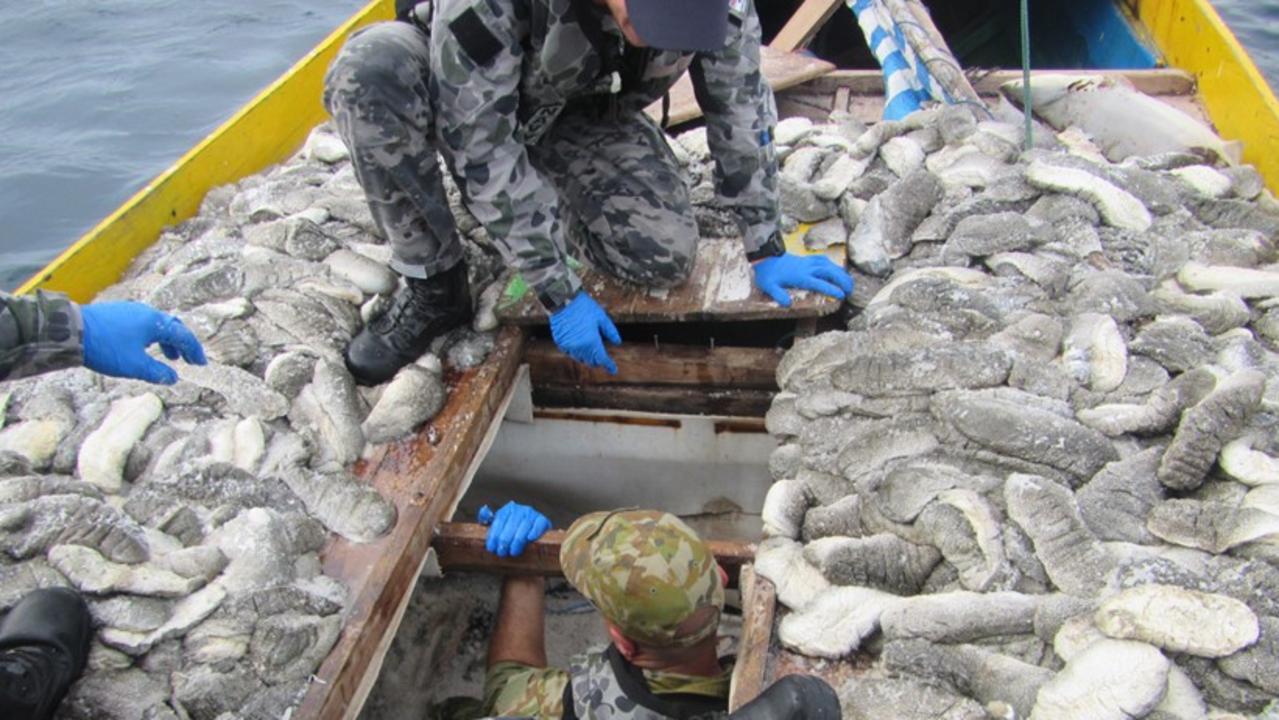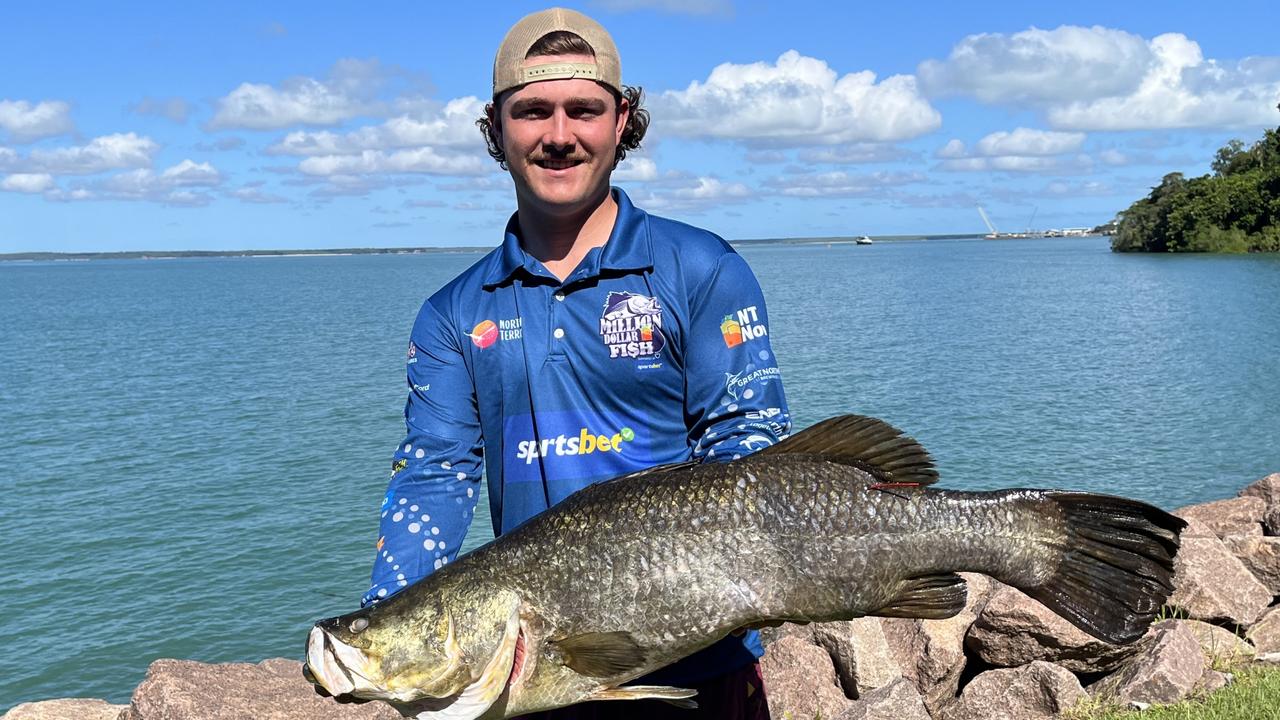Mates enjoy barra mission
A COUPLE of weeks ago, I wrote up how Four Mile Hole in Kakadu National Park would reopen in 2017 after being closed for the whole of 2016 due to 95 per cent inundation by the noxious aquatic plant salvinia
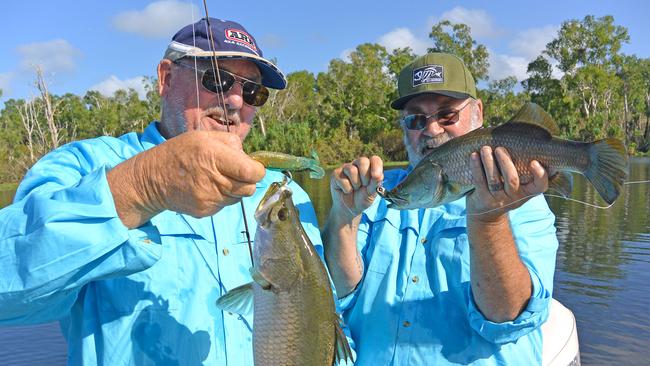
Fishing
Don't miss out on the headlines from Fishing. Followed categories will be added to My News.
A COUPLE of weeks ago, I wrote up how Four Mile Hole in Kakadu National Park would reopen in 2017 after being closed for the whole of 2016 due to 95 per cent inundation by the noxious aquatic plant salvinia.
Thanks to the record wet season of 2016-17, most of the salvinia had been flushed down and away from Four Mile Hole, most likely into the tidal reaches of the Wildman River where it would die.
As promised, the iconic lagoon was opened to the public via the Kakadu Road Report late on 6 July.
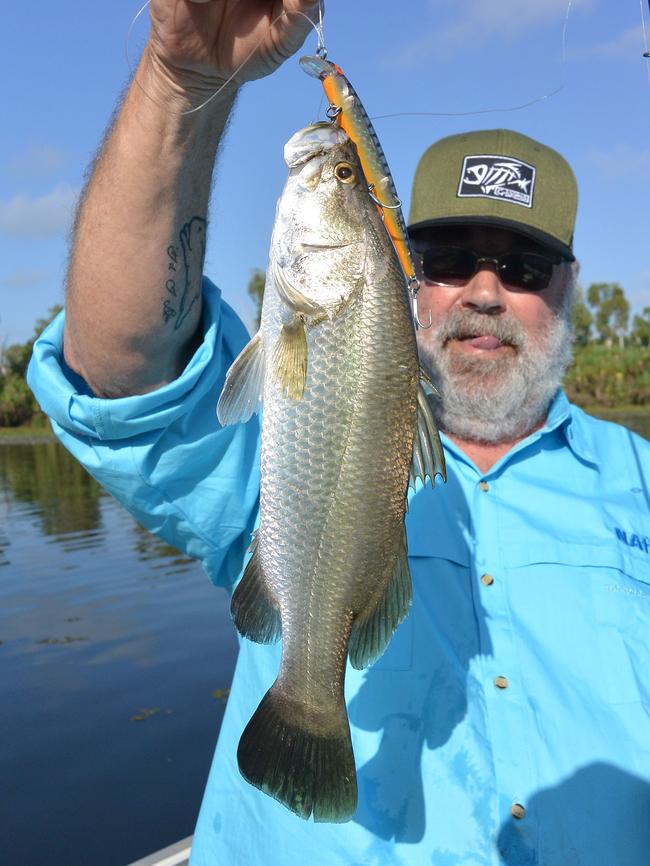
Well, as luck would have it, I had some great old friends visiting and we had planned to go barra fishing at Corroboree Billabong the very next day.
That plan changed smartly, and a pre-dawn start saw us winding our way along the 40km Four Mile Hole track with the sun spearing through flowering woollybutts, seasonally-bare kapoks, bright-purple turkey bush and the ever-present myriad of sand palms.
Early dry season burning had already begun, and smouldering patches with charred bark were a timely reminder that we were in Top End heartland.
Is the Four Mile Track ever devoid of corrugations?
It wasn’t nearly as bad as it can be – when the drive in and out might see impatient drivers lose a few kilos of metal or rubber from their boat trailers – but the obligatory stretch that needed to be driven slower than calmly added half an hour to the journey.
My mates Terry Atkinson and Ray Stenhouse took it all in: they were rapt.
Ray had visited a few times over the years, once catching a 124cm barra with me on the South Alligator River, but this was his first “bush billabong drive” experience.
Terry, on the other hand, had never been to the Territory before, and had never seen a barra let alone caught one.
Breaking out of the forest on to the Wildman floodplain is always a deep-breathing moment for me; it’s wild and primitive… and not something you can rush over given the baked black soil still bearing the ragged hoof prints and dish-shaped wallows of last-century’s water buffalo.
We followed what track there was on this “opening day” – some 500 metres to the eastern end of the lagoon where I always prefer to launch.
I was surprised to see a camp already set up, and another vehicle with empty trailer; we weren’t the only ones to make a quick decision.
Launching off the bank was relatively straightforward: Ray backed us in and I reversed off the trailer into deep water and, it has to be said, patches of salvinia. Soon the big E-TEC had us gliding up this magnificent waterway and it was hard not to notice occasional bankside patches of clustered salvinia.
But mainly the lagoon was devoid of the dreaded plant and we began with a troll past some lilies about halfway.
Ray banged a small barra almost as soon as we started, and he immediately announced: “I’m one up on you Acko.”
It had started!
However, what followed was not so much a competition between mates but an experience of a lifetime, and that included for me too. I’ve seen barra pretty thick before but, in almost 40 years of targeting this spectacular sportfish, I’ve never seen barra so concentrated and so keen to bite.
Just like almost anywhere else in the Top End this dry season, they were small fish, all spawned just before and during the last wet season.
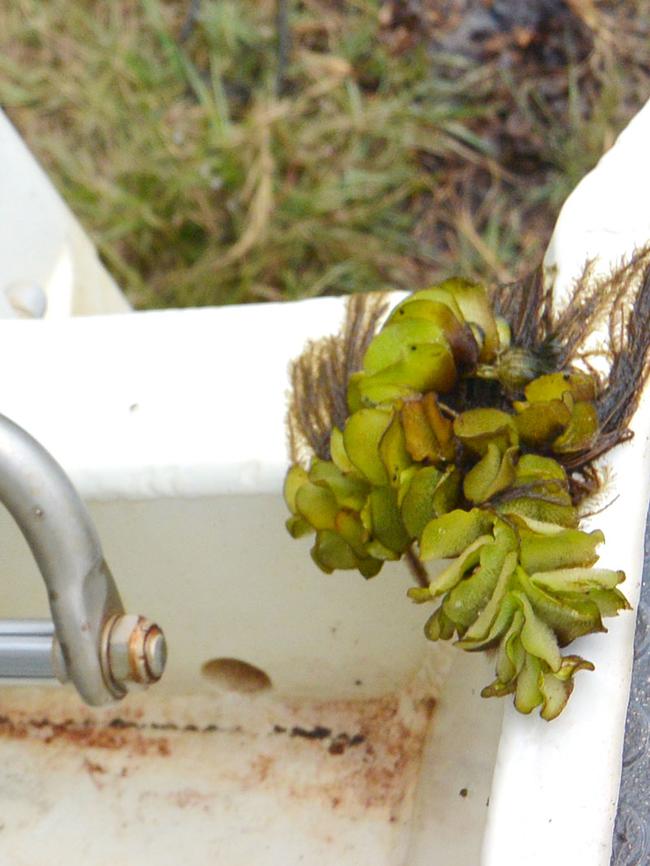
And they were like little puppy dogs, charging in to play with any hard-body or soft-plastic lure you threw out.
The water was clear and you could literally see them swarming. Three times I put my rod down, unknowingly letting the lure fall into the water, and three times I nearly lost it over the side.
At one stage, while we were having lunch and a chat, I was sitting on the gunwale with my back to the water and picked up my rod and placed it over my shoulder purposely allowing the soft plastic to hit the water behind me.
One shake and instantly a little barra was on, and I lifted it over the side to where it dangled in front of me, and without me even looking behind.
I unhooked it and threw it back over my shoulder into the water… and I did that twice more in the space of a minute!
Call it showing off, or just trying to take this amazing event to the highest level possible, there’s no doubt we were experiencing a phenomenon.
We called it quits about 1 o’clock, and reckoned we’d caught around 200 barra.
Ray easily landed more than 100 on his own, Terry about 50 or 60 and the rest I caught fooling around “trick fishing” with bare-hook jig heads, a bit of plain foil, an inch of rag and so on. I was interested to see two clear size ranges: barra 25-35cm long and barra 45-50cm long.
Obviously, there had been two major spawnings two or three months apart.
We caught only one barely-legal barra, and by the way the other two boats on the lagoon were experiencing similar baby barra mayhem.
As I’ve written before, the next few years will see some amazing fishing from this particular 0+ barramundi year class, the “Barra Baby Boomers” as I call them.
As for the salvinia, let’s hope the good work planned by Kakadu National Park management and the Gundjeijmi Aboriginal Corporation to breed up mobs of salvinia-munching weevils is a huge success, and Four Mile Hole never needs to be closed again.
And don’t forget to clear your trailers of any salvinia before launching anywhere else in freshwater.

